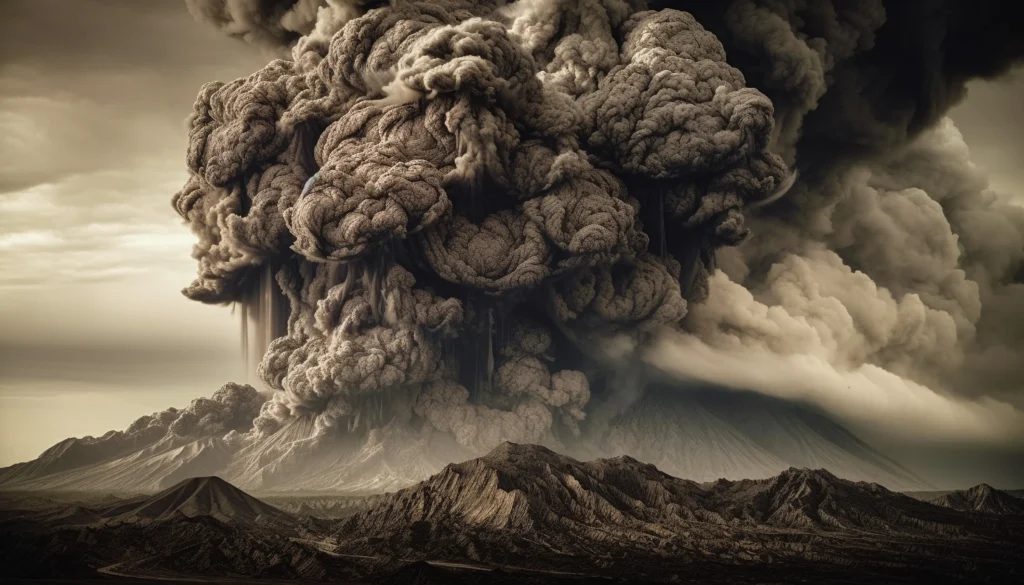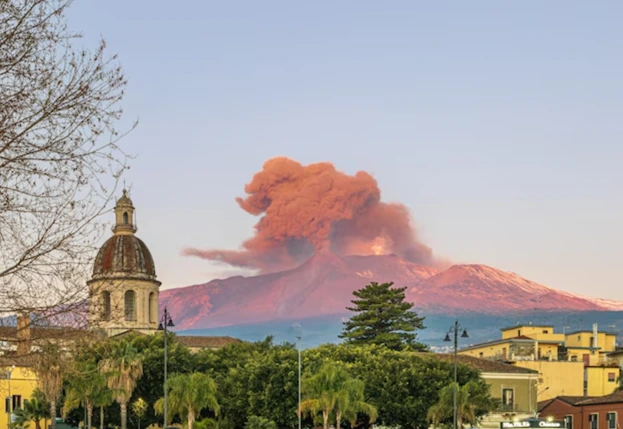On the morning of June 2, 2025, Mount Etna—Europe’s most active volcano—erupted once again in a fiery display that captured the attention of scientists, locals, and travelers from around the world. Located on the island of Sicily, Italy, Etna has a long history of volcanic activity that dates back thousands of years. But even with modern monitoring and predictive technologies, each eruption brings its own surprises and challenges.
Today’s eruption was particularly dramatic, with towering clouds of ash, lava fountains lighting up the sky, and minor tremors felt in nearby towns. While no fatalities have been reported, the event prompted immediate emergency response measures and reminded everyone of the ongoing power beneath our feet.

The Eruption Unfolds: A Spectacle of Fire and Ash
At approximately 8:45 AM local time, the southeastern crater of Mount Etna erupted in what geologists describe as a strong strombolian event. The eruption was preceded by increased seismic activity during the night, which prompted the National Institute of Geophysics and Volcanology (INGV) to raise the alert level early in the morning.
Huge columns of ash were sent several kilometers into the air, visible from as far away as Catania and Taormina. Lava fountains shot upward, reaching estimated heights of over 100 meters (330 feet), accompanied by loud rumbling sounds. Local residents reported windows rattling and ash lightly dusting cars and rooftops in surrounding towns.
Thankfully, the lava flow was confined to unpopulated zones on Etna’s slopes, minimizing direct risk to human life. However, the volume and speed of the eruption were notable even by Etna’s own high standards.

Emergency Response and Public Safety Measures
As soon as the eruption began, Italian authorities activated pre-established emergency protocols. The summit area of the volcano—frequented by guided tourist hikes—was immediately closed to all visitors. The airspace over the region was temporarily restricted due to the ash plume, affecting several domestic and European flights departing from Catania Airport.
Civil Protection services coordinated with local municipalities to monitor air quality, particularly levels of sulfur dioxide and fine ash particles that can be harmful when inhaled. Mobile alerts were sent to residents advising them to stay indoors, avoid unnecessary travel, and use masks outdoors.
Fortunately, due to the quick response and well-organized monitoring systems, no serious injuries have been reported. Authorities continue to assess the volcano’s behavior and are prepared for further evacuations if necessary.

Tourism Disruption: Fear, Cancellations, and Resilience
Mount Etna is not just a scientific wonder—it’s also a major tourist attraction. The sudden eruption disrupted what would have otherwise been a busy holiday weekend in Sicily. Tourists staying near the volcano’s slopes described scenes of confusion and urgency, with many fleeing hotels and tour sites when the eruption began.
Hiking trails, cable cars, and tour buses were quickly shut down, and many planned excursions were canceled. While some tourists expressed fear and anxiety over the eruption, others marveled at the sight from a safe distance, calling it “a once-in-a-lifetime experience.”
Tour operators and local businesses are working with authorities to ensure the safety of visitors while offering alternate experiences around the region. Sicily’s tourism board issued a statement urging calm, emphasizing that most areas remain safe and accessible.

Scientific Insights and Ongoing Monitoring
Etna’s eruption provides a wealth of data for volcanologists, who continuously monitor the volcano’s seismic patterns, gas emissions, and ground deformation. Today’s event appears to have been triggered by a partial collapse within the southeastern crater, which released built-up pressure from the magma chamber below.
Researchers are now studying satellite imagery, drone footage, and seismic records to better understand the dynamics of this eruption and to improve predictive models for future activity. While Mount Etna has erupted frequently—sometimes several times a year—each event offers new lessons in volcanic behavior and geological change.
Scientists emphasize that despite the awe-inspiring beauty of such eruptions, it’s vital to maintain vigilance. Volcanic activity can escalate rapidly, and Etna’s status as an “open system” volcano means pressure can build and release with little warning.
Awe, Caution, and Respect for Nature
Mount Etna’s June 2, 2025 eruption was a spectacular and sobering reminder of Earth’s natural power. While the situation appears stable for now, the event serves as a call for continued respect for geological forces and the importance of science-backed safety planning.
For residents, tourists, and scientists alike, Etna remains a symbol of both danger and fascination—a mountain that breathes fire and commands awe. As Sicily recovers and the skies begin to clear, the world once again watches this ancient giant with both wonder and caution.
Table of Contents
Volcano eruptions in 2025: See which are actively spewing lava